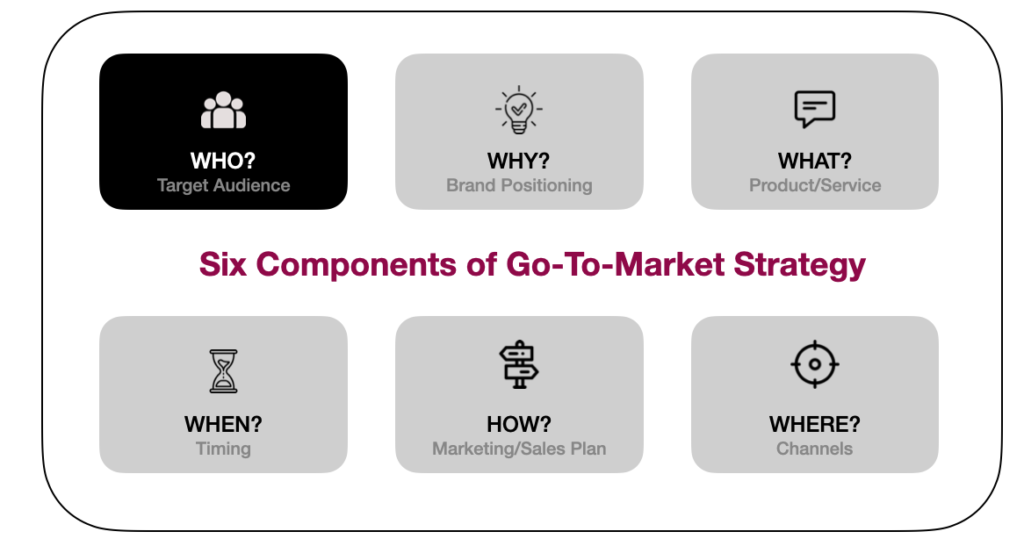
Product Launch
“Good product managers know what their customers want, and great product managers know what their customers need!”
– Ben Horowitz
Welcome to Day 16 of the PM series – Product Management in 30 days!
In the world of product management, the product launch is a make-or-break moment. It’s the culmination of months, or even years, of hard work, innovation, and market research. A successful product launch is more than just unveiling a new product. It is about executing a well-crafted Go-to-Market (GTM) strategy that ensures your product reaches its intended customers, solves their problems, and achieves the market traction it deserves.
Learning Objectives
- Understanding the Product Launch Process: Identify the key stages of the product launch process, including the pre-launch, launch, and post-launch phases. Recognize the importance of thorough market research, product development, pricing strategies, and team alignment in the pre-launch phase.
- Executing a GTM Strategy: Comprehend the significance of a well-crafted Go-to-Market (GTM) strategy in ensuring a successful product launch. Gain insights into the essential elements of the launch phase, such as messaging, marketing campaigns, sales enablement, customer support readiness, and launch events.
- Post-Launch Analysis and Iteration: Understand the importance of continuous monitoring through key performance indicators (KPIs) in the post-launch phase. Learn the iterative process of collecting feedback, identifying areas for improvement, and implementing changes to enhance the product and strategy.
- Why GTM Strategy Matters: Recognize the clarity and focus provided by a GTM strategy in launching and promoting a product. Understand how market understanding, efficient resource allocation, consistent messaging, impact maximization, risk mitigation, and faster time to market contribute to the significance of a GTM strategy.
- Six Components of GTM Strategy: Explore the “Who, Why, What, Where, When, and How” framework to break down the components of a GTM strategy.Understand the roles of target audience identification, value proposition definition, product offering clarity, distribution channel selection, sales approach determination, and launch timing in a comprehensive GTM strategy.
Introduction
Imagine this scenario: you and your team have worked tirelessly to develop a groundbreaking product. It has the potential to revolutionize an industry or solve a pressing customer need. The right GTM strategy ensures that all that effort does not go to waste. The Product Launch and GTM Strategy are critical aspects of the product management process.
🚀 Understanding the Product Launch Process
Let’s outline the key stages of the product launch process:
1️⃣ Pre-Launch Phase: Preparation is Key
- Market Research: In this initial stage, gather comprehensive data about your target customers, competitors, and market trends. Identify customer pain points that your product can address.
- Product Development: Ensure your product is fully developed, tested, and ready for market entry.
- Pricing and Positioning: Determine your pricing strategy and how customers will perceive your product in the market.
- Team Alignment: Ensure your cross-functional team, including marketing, sales, and customer support, is aligned with the product’s goals and messaging.
2️⃣ Launch Phase: Execute Your GTM Strategy
- Messaging and Positioning: Craft compelling messaging highlighting your product’s unique value proposition. Define your positioning relative to competitors.
- Marketing Campaigns: Plan and execute marketing campaigns across various online and offline channels. This may include social media, email, and advertising.
- Sales Enablement: Equip your sales guys with the necessary tools, training, and collateral to effectively sell the product.
- Customer Support Readiness: Ensure your customer support team is prepared to handle inquiries, troubleshoot issues, and provide top-notch service.
- Launch Event: Host a launch event. It can be virtual or physical, to create excitement and generate buzz around your product.
3️⃣ Post-Launch Phase: Monitor and Iterate
- Performance Tracking: Continuously monitor key performance indicators (KPIs) to assess the success of your launch. KPIs may include sales, customer feedback, and user engagement.
- Feedback Loop: Collect and analyze feedback from customers and the market to identify areas for improvement.
- Iterate and Improve: Use all the insights gained from the post-launch phase to make necessary adjustments to your product and strategy.
🤷♂️ Why GTM strategy?
A Go-To-Market (GTM) strategy is crucial for several reasons:
1️⃣ Clarity and Focus: A GTM strategy provides a clear roadmap and focus for launching and promoting a product. It outlines the target audience, key messaging, and distribution channels, ensuring that everyone involved is aligned on the objectives.
2️⃣ Market Understanding: It involves thorough research on the market, competition, and target audience. This understanding helps in tailoring the product offering to meet specific market needs and preferences.
3️⃣ Efficient Resource Allocation: With a well-defined GTM strategy, resources can be allocated more efficiently. It prevents unnecessary spending on marketing channels or activities that may not resonate with the audience.
4️⃣ Consistent Messaging: A GTM strategy ensures that messaging is consistent across all channels. Consistency is crucial for building brand identity and making a lasting impression on the audience.
5️⃣ Maximizing Impact: By carefully planning the launch and promotion, a GTM strategy aims to maximize the impact of the product in the market. It helps in creating a strong initial presence and gaining attention from the target audience.
6️⃣ Risk Mitigation: Understanding the market landscape and potential challenges allows for proactive risk mitigation. It helps in anticipating issues and preparing contingency plans, reducing the impact of unforeseen obstacles.
7️⃣ Faster Time to Market: A well-executed GTM strategy streamlines the product launch process, enabling a faster time to market. This is crucial, especially in competitive industries where being the first to market can provide a significant advantage.
8️⃣ Measurable Success: A GTM strategy includes key performance indicators (KPIs) and metrics to measure success. This data-driven approach allows for continuous evaluation and optimization of the strategy for future launches.
💁 Six Components of GTM Strategy

👬 Who:
Target Audience: Identify the specific group of customers or businesses the product is designed for.
The following can also be considered under – WHO?
Sales Team: Define the sales team responsible for reaching and engaging with the target audience.
Partnerships: Consider potential partners or collaborators that can aid in reaching the target audience.
🧐 Why:
- Purpose: Clearly articulate the purpose of bringing the product to market.
- Value Proposition: Define the unique value the product offers to customers, highlighting benefits and solving pain points.
- Business Goals: Outline the overarching business objectives the GTM strategy aims to achieve.
🤨 What:
- Product Offering: Clearly define the product, its features, and its competitive advantages.
- Messaging: Develop a compelling and consistent message that communicates the product’s value proposition.
- Pricing Strategy: Determine the pricing model and strategy for the product.
🏖️ Where:
- Distribution Channels: Identify the channels through which the product will be distributed, considering both online and offline options.
- Geographic Focus: Determine the target geographical areas for the initial product launch.
- Market Presence: Assess where the product fits in the overall market landscape.
🤷♂️ How:
- Sales Approach: Define the sales team’s approach to reach and convert customers.
- Marketing Channels: Determine the marketing channels and tactics to be used for product promotion.
- Training and Enablement: Provide the necessary training and resources to sales and marketing teams.
- Execution Plan: Develop a detailed plan outlining the steps and activities to be undertaken to execute the GTM strategy.
⏳When:
- Launch Timing: Decide on the specific timing for the product launch, considering market trends, seasonality, and competitor activities.
- Product Lifecycle: Consider where the product is in its lifecycle and how the timing aligns with strategic goals.
- Campaign Timing: Plan marketing campaigns and promotions with consideration for optimal timing.
🏆 Crafting a Winning GTM Strategy – simplified
Now, let’s delve into the specifics of building a successful GTM strategy:
- Target Customer Segmentation – Identify and segment your target customer based on demographics, behaviour, and needs. Tailor your messaging and marketing channels to each segment.
- Messaging and Positioning – Develop clear and compelling messaging that communicates the product’s unique benefits and differentiates it from competitors. Position your product as a solution to specific pain points or critical challenges your target customer faces.
- Channel Selection – Choose the marketing and distribution channels that are most relevant to your customer. This may include content marketing, social media, email marketing, influencer partnerships, and more.
- Content Creation – Develop high-quality content that educates, informs, and engages your customers. Content can include posts, videos, infographics, and whitepapers.
- Sales Enablement – Equip your sales team with training, product knowledge, and sales collateral that helps them effectively communicate the product’s value to potential customers.
- Pricing Strategy – Set pricing that aligns with your product’s perceived value and competitive positioning. Try considering different pricing models. It could be subscription, freemium, or tiered pricing.
- Launch Event – Plan and execute a memorable launch event that generates excitement and media coverage. Whether virtual or in-person, an impactful launch event definitely creates buzz.
- Customer Support – Ensure your customer support team is well-prepared to handle inquiries, troubleshoot issues, and provide timely assistance to customers.
- Monitoring and Analysis – Continuously monitor KPIs to assess the success of your GTM strategy. Use data-driven insights to make informed decisions.
- Iterative Improvement – Use feedback and performance data to refine your GTM strategy and make ongoing improvements to your product and marketing efforts.
🔔 Conclusion
The product launch and GTM strategy are pivotal moments in a product’s life. They require meticulous planning, execution, and adaptability. By understanding the phases of the product launch process and crafting a well-thought-out GTM strategy, you can increase your product’s chances of success in the market, drive adoption, and achieve long-term growth.
Quiz time
Question: What is the primary purpose of a Go-To-Market (GTM) strategy in product management?
A) Designing the product
B) Efficient resource allocation
C) Conducting market research
D) Employee training
Question: Which phase of the product launch process involves continuous monitoring of key performance indicators (KPIs)?
A) Pre-Launch Phase
B) Launch Phase
C) Post-Launch Phase
D) Feedback Loop Phase
Question: What does the “Who, Why, What, Where, When, and How” framework represent in a GTM strategy?
A) A list of product features
B) Components of a comprehensive GTM strategy
C) Steps in market research
D) User personas
Question: In the pre-launch phase, what does the team alignment component of the product launch process involve?
A) Setting product prices
B) Ensuring cross-functional team alignment
C) Crafting marketing campaigns
D) Monitoring key performance indicators
Question: Why is continuous iteration and improvement emphasized in the post-launch phase?
A) To increase initial sales
B) To streamline the product launch process
C) To address areas for improvement and enhance the product and strategy
D) To reduce the need for customer support
✍️ Write your answers in the comment section. e.g 1-a, 2-b, 3-c etc.
If you want to learn more about product management, you can also find other posts. The Full series is available here
One of the recommended books to learn about product management is Crossing the Chasm by Geoffery A. Moore
💌 Do drop me a comment below if you found the content useful and/or want me to write on a specific topic. This will make my day! 🙂
Also, share the post if you think this might help someone. The sharing link is at the top of the page.
Join FreeMentor as a student if you are a newbie in product management and want to have one Free 1:1 mentorship session.
Disclaimer:
Please note that I don’t make any guarantees about the information supplied in this post. I share educational and informational resources that are intended to help you succeed in understanding product management. You nevertheless need to know that your ultimate success or failure will be the result of your own efforts, your particular situation, and innumerable other circumstances beyond my knowledge and control.
#ProductManagement #ProductLaunch #GTMStrategy #MarketingStrategy #ProductDevelopment #LinkedInPost #ProductManager

